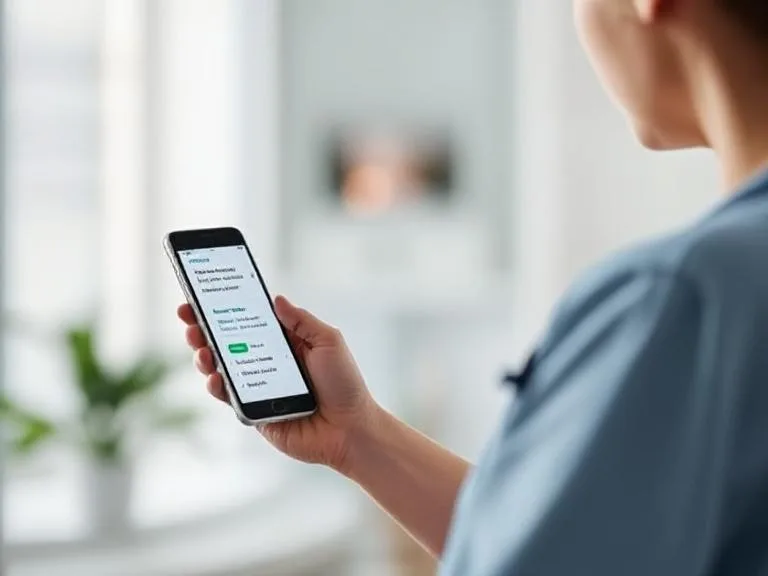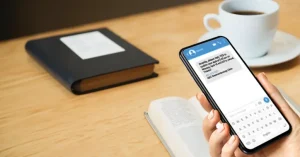Missed Appointments leading to revenue loss have been one of the major problems in the healthcare sector in the USA. Traditional methods of communication have not been able to solve the problem of rising no-shows at appointments despite increasing communication costs.
Doctoc has moved away from traditional patient reminder techniques like phone calls or sending post mails, which are costly and not easily scalable. With text-based patient reminder technology, Doctoc has made appointment reminder technology for patients affordable, easy to use and scalable.
With active inputs from doctors, Doctoc has added advanced features to its patient reminder like customized templates, multiple communication methods, just-time reminders, adding CTA into the messages, and easy upload and downloading of patient information into spreadsheets.
Text based patient reminders have been a game-changer for the healthcare industry. A study conducted by the Department of Primary Care and Social Medicine at Imperial College London states that Text message appointment reminders reduce no-shows by 38%.
Persistent Problems with Traditional Patient Reminder Techniques
Traditional appointment reminders for patients have failed to solve the problem of no-shows. Some of the top problems with traditional patient reminder techniques are mentioned below:
- Challenges in Scalability: Large healthcare clinics encounter formidable hurdles when seeking to expand their operations. The conventional methods of reaching out to patients, such as individual phone calls or personalized correspondence, prove to be exceedingly time-consuming for healthcare personnel, impeding the clinic’s ability to efficiently manage its burgeoning caseload.
- Language and Cultural Barriers: The mosaic of languages and cultural nuances among patients poses a significant barrier to effective communication. Engaging with patients over the phone becomes particularly fraught with potential misunderstandings, often resulting in missed appointments and disruptions to the continuity of care.
- Inefficiencies in Communication: The timing of personalized outreach efforts, whether through phone calls or postal deliveries, frequently misses the mark, leading to suboptimal outcomes. Errant communications, arriving either prematurely or belatedly, exacerbate inefficiencies and contribute to an uptick in appointment no-shows.
- Financial Implications: The financial toll of traditional communication methods weighs heavily on clinic resources, with the costs of telephonic engagement and physical mailings escalating rapidly as operations expand. Such expenditures strain the clinic’s budgetary constraints, rendering traditional outreach strategies economically unsustainable in the quest for growth.
- Lack of Tailored Engagement: A one-size-fits-all approach to patient reminders falls short of addressing the multifaceted needs of a diverse patient population. The absence of personalized communication precludes the clinic from effectively addressing individual patient concerns and fostering adherence to prescribed treatment regimens.
How Doctoc transforms the Patient Reminder landscape?
Doctoc is a patient communication platform built with active guidance from doctors. The just-in-time patient reminder feature ensures patients are well-prepared and arrive punctually for their appointments, ultimately leading to improved business efficiency and better patient outcomes.
- Diverse Communication Channels: Healthcare professionals are empowered to engage patients through a versatile array of communication channels, including text messaging and phone calls. By embracing this multifaceted approach, clinics adeptly cater to the varied communication preferences of their patient base, ensuring inclusivity and accessibility for all individuals, irrespective of their technological capabilities.
- Precision Timing for Patient Engagement: Leveraging the innovative capabilities of Doctoc, clinics orchestrate appointment reminders with impeccable timing, delivering notifications precisely when needed. This just-in-time approach ensures that patients receive pertinent guidance and instructions promptly, facilitating seamless preparation for their scheduled consultations and optimizing the overall efficiency of healthcare delivery.
- Interactive Patient Engagement: By integrating customized Call to Action (CTA) buttons into text-based communications, clinics foster heightened patient engagement and empowerment. Patients can actively participate in their healthcare journey, whether by confirming appointments or undertaking other relevant actions, thereby forging a more collaborative and mutually beneficial care dynamic.
- Tailored Messaging for Individualized Care: Through the sophisticated functionality of Doctoc, clinics craft bespoke messages tailored to the unique needs and preferences of each patient. By delivering content that is pertinent and patient-centric, healthcare providers bolster patient engagement and adherence to prescribed guidelines, nurturing a culture of proactive health management and informed decision-making.
- Streamlined Template Creation: Doctoc facilitates the seamless creation of customizable appointment and recall templates, tailored to the specific requirements of each clinic and specialty. This empowers healthcare practitioners to efficiently communicate essential information to patients, ensuring clarity and consistency across all interactions while optimizing workflow efficiency.
- Effortless Data Management: With Doctoc’s intuitive interface, clinics effortlessly upload and download patient data using convenient spreadsheet formats. This streamlined process facilitates seamless integration with existing Electronic Medical Records (EMR) systems or standalone data management protocols, enhancing operational efficiency and data accessibility for healthcare providers.
How Patient Reminders Improve Clinic Efficiency?
Patient reminders play a vital role in ensuring that patients come to the clinic after proper preparation. Below are specialization-centric advantages of patient reminders and how each specialization benefits.
How do Patient Reminders Improve GI Clinics (Colonoscopy Procedures)?
Timely patient reminders are essential for GI clinics conducting colonoscopy procedures. These reminders ensure patients adhere to bowel preparation protocols, preventing last-minute interventions by doctors and minimizing the need for appointment rescheduling. With Doctoc, patients are better prepared, saving both clinic and patient time.
How do Patient Reminders Improve Vision Clinics (LASIK Surgeries)?
Vision clinics can leverage in-time patient reminders to enhance the preparatory phase preceding LASIK surgeries. These reminders reinforce adherence to critical pre-surgery instructions, including avoiding hard contact lenses, thereby optimizing surgical outcomes. Additionally, patients receive timely notifications 24 hours in advance, underscoring the importance of refraining from using facial lotions or mascara. By tailoring reminders to the specifics of LASIK procedures, clinics elevate the likelihood of patient compliance, ensuring that pre-surgery instructions are effectively communicated and followed, thereby contributing to the overall success of the surgical intervention.
How do Patient Reminders Improve Urology Clinics (Lithotripsy or Vasectomy Procedures)?
Urology clinics performing procedures such as Lithotripsy or Vasectomy rely on comprehensive patient preparation to ensure successful outcomes. Doctoc’s patient reminders can be used for sending timely reminders to patients to ensure that patients undergo proper pre-surgery tests like urine culture 1-3 weeks before treatment.
Patients with cardiac diseases, hypertension, or diabetes on insulin must be reminded to undergo an Electrocardiogram (ECG) within 1-3 weeks before Lithotripsy or Vasectomy. Patients must undergo Kidney, Ureter, and Bladder (KUB) X-rays to assess their urological health after 1 month of treatment.
A non-contrast Spiral CT scan or abdomen/pelvic ultrasound is necessary within one year before treatment to evaluate the condition of the organs involved. Blood tests may also be ordered, especially for patients with specific conditions such as diabetes or those taking medications like diuretics or Coumadin.
These reminders from the clinics ensure that patients comply with prep requirements to improve surgical conditions and reduce cancellations. By facilitating patient preparation, Doctoc plays a crucial role in enhancing the efficiency and effectiveness of urological procedures, ultimately leading to improved patient outcomes and satisfaction.
How do Patient Reminders Improve Pediatric Clinics (Vaccination Schedules)?
A newborn child needs vaccines for different diseases at regular intervals to avoid any infection and improve the overall health of the child. With the help of Doctoc, clinics can remind the child’s parents about specific vaccines that need to be administered at specific timeframes. It helps parents stay informed and organized about their child’s vaccination schedule.
How do Patient Reminders Improve Optometrists (Eye Exam Clinics)?
Optometrists need to send reminders to patients once every year for regular eye examinations. Most eye exam clinics use traditional methods of reminders like phone calls or mail posts which are more time-consuming and costly. Eye clinics can use Doctoc’s in-time recall facility to send reminder texts to patients in a very painless and quick way.
How do Patient Reminders Improve Dental Clinics (Teeth Cleaning)?
Dental clinics can use Doctoc’s in-time patient reminder facility to recall patients every 3-6 months for dental checkups and teeth cleaning. Calling or mailing patients for regular checkups can be too costly and time-consuming. Doctoc’s patient reminder through text feature that supports multiple templates for various occasions will make the whole process simple, cost-effective and seamless.
How to Optimize Patient Reminder Technology?
Clinics must follow the guidelines below for optimized returns from the Patient Reminder feature. It will help them use the technology for better returns.
- Having clear goals for your appointment reminders, such as reducing no-shows, maintaining fully booked appointment slots, and minimizing last-minute cancellations.
- Utilize multiple communication channels like text, email, and voice reminders to cater to patients’ preferences.
- Prioritize text reminders due to their effectiveness, especially with younger generations.
- Avoid overwhelming patients by bombarding patients with too many text reminders.
- Keep reminder messages concise and focused on essential appointment details.
- Include clear calls-to-action in your messages to prompt patient responses, such as confirming, rescheduling, or cancelling appointments.
- Integrate surveys into your reminder system to gather patient feedback and improve the overall experience.
- Pay attention to message content, ensuring it includes only necessary information like appointment date, time, location, and a clear call-to-action.
- Maintain HIPAA compliance by limiting the information shared in reminder texts and providing opt-out options for patients.
- Establish organized workflows for reminder texts based on various patient actions, such as scheduling, cancelling, or confirming appointments.
Conclusion
Patient reminder through texts marks a paradigm shift in healthcare delivery. It offers a comprehensive solution to the challenges of missed appointments and inefficient communication. Doctoc’s patient reminder system enjoys a multi-channel approach and customizable features with automation capabilities that improve resource allocation and enhance patient engagement. Embracing patient appointment reminders is not merely an innovation but a transformative step towards a more connected, responsive, and resilient healthcare ecosystem.






